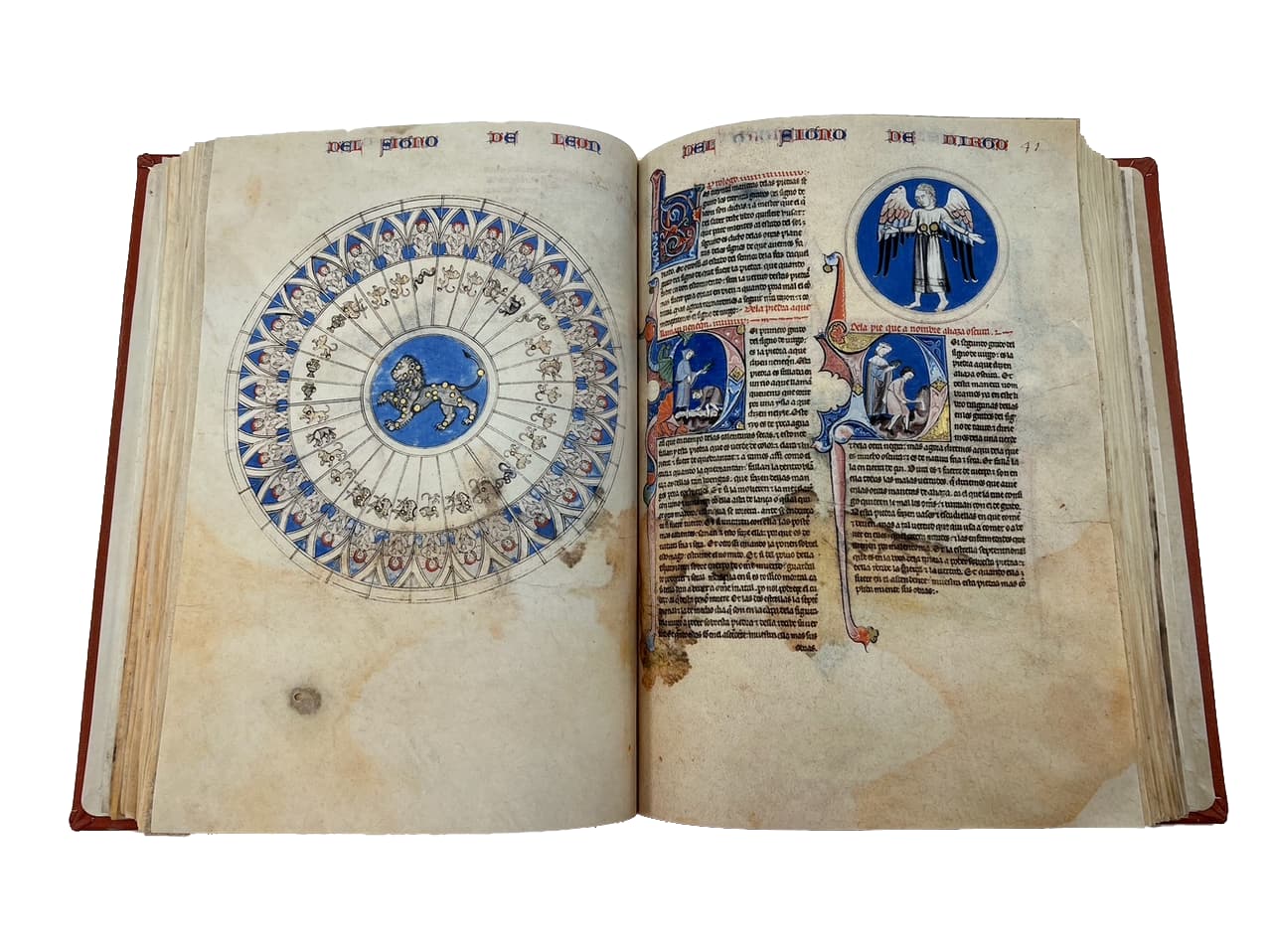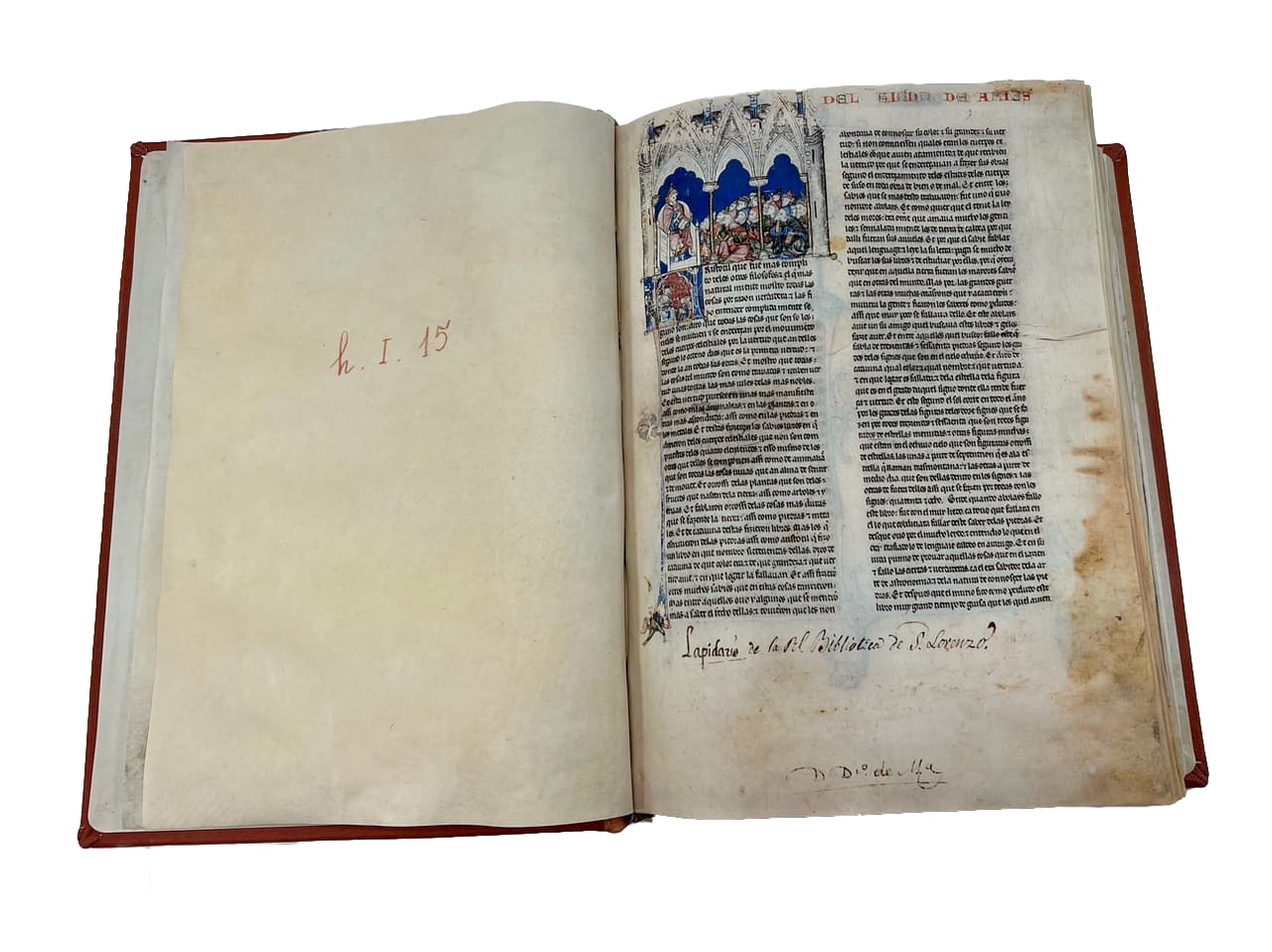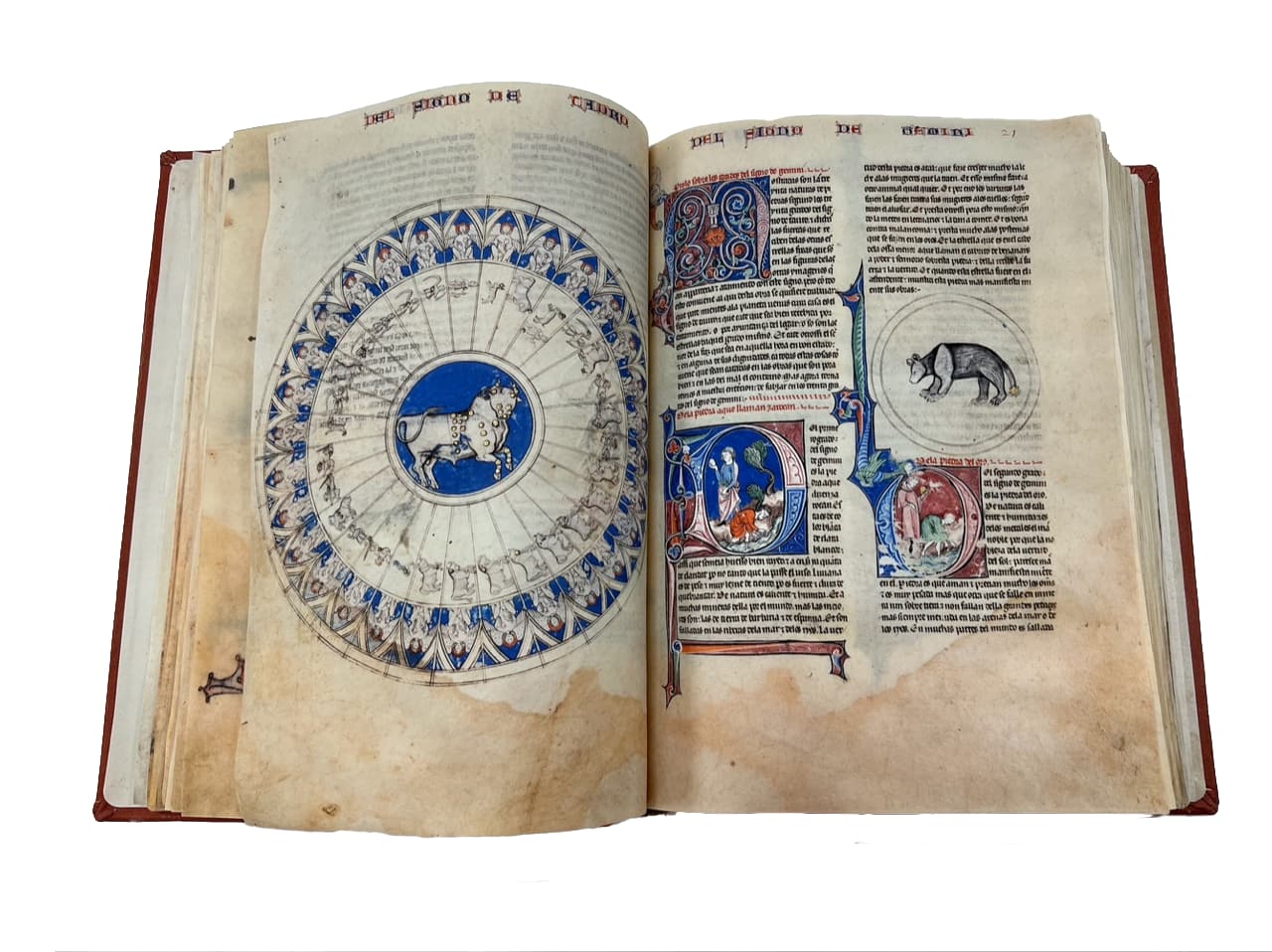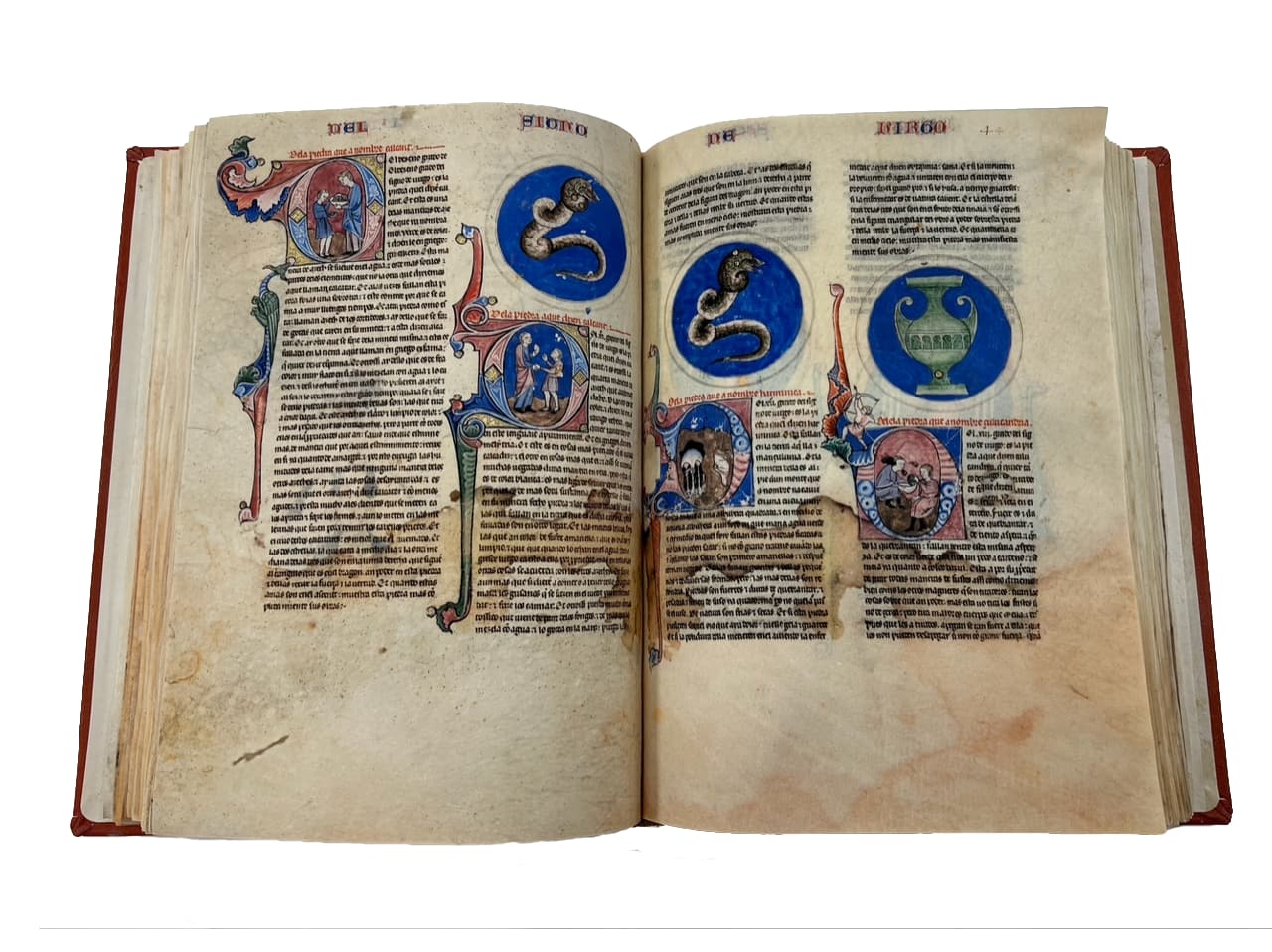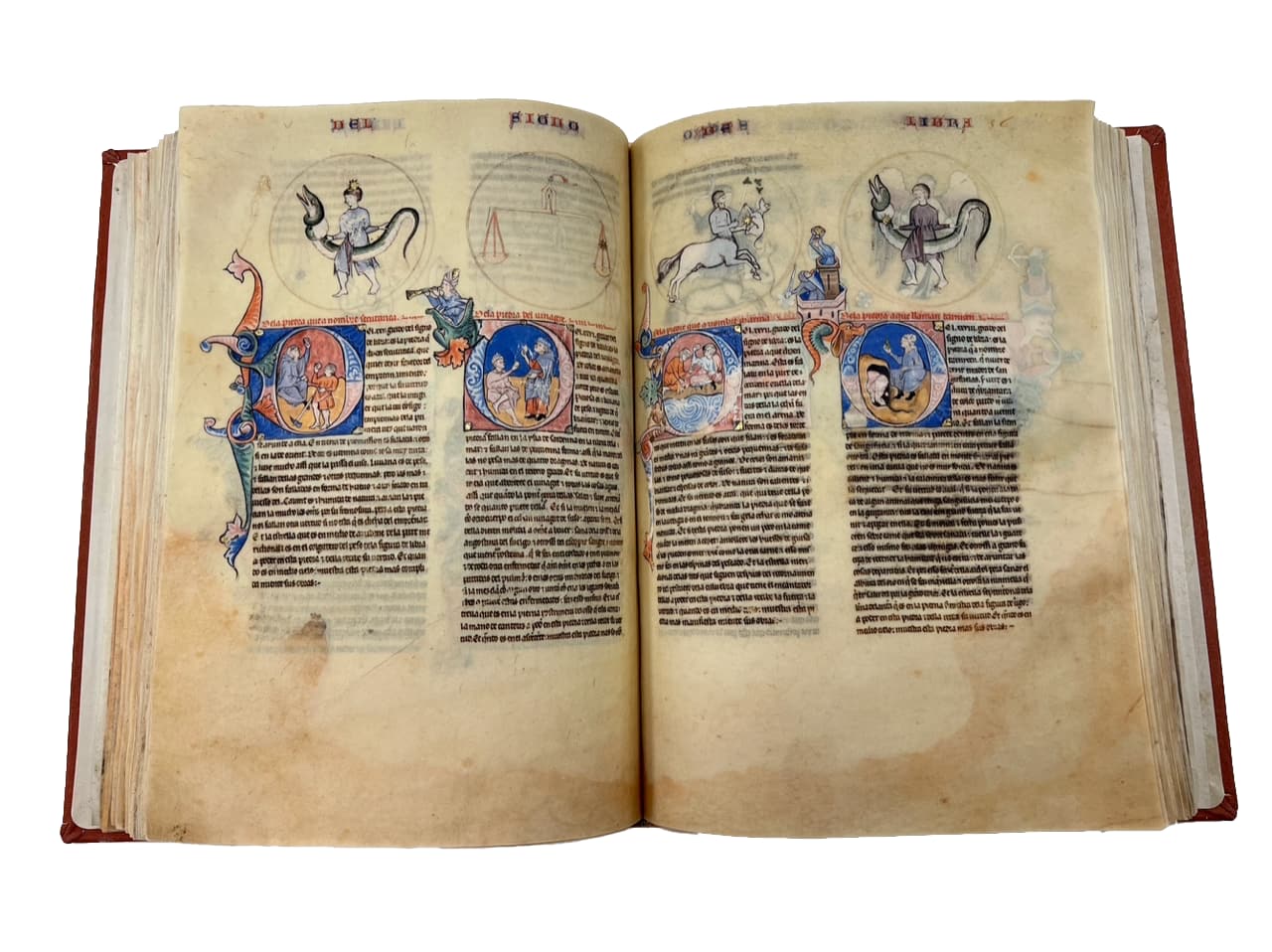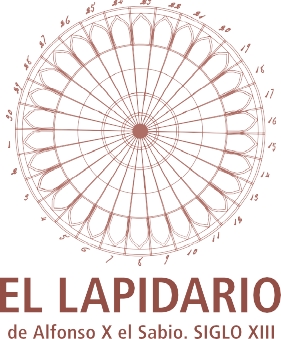 Edition on Natural Parchment
Edition on Natural Parchment
Single and exclusive edition of 290 copies, numbered and certified by a notary, with it also being certified by a notary that only natural parchment was used in the preparation process.
The Lapidary was the first scientific work to be translated into Spanish at the behest of King Alfonso X the Wise. As the prologue explains, a book written in Arabic on the properties of stones and their medical applications came into the hands of the then prince in the city of Toledo. On the advice of his physician, Yehudá ben Mošé, he decided to commission the translation.
That first translation was made between 1243 and 1250 by the above-mentioned Yehudá, one of the Jewish scientists at the service of the court, and Garcí Pérez, a cleric, who worked together on this project. This subject matter was one of the royal scriptorium’s interests for years, and the new texts brought in enriched and extended the contents of the work. Around 1275, this work was produced in the richly illuminated manuscript that has come down to us, Ms. h-I-15 of the Library of the Royal Monastery in El Escorial, one of the fundamental items in the Alphonsine scriptorium and one of the most outstanding codices in Spanish manuscript production.
The Alphonsine Lapidary, with a strong Aristotelian stamp and a marked debt to Islamic scientific trends, contains four different lapidaries that bring together the classical tradition of the study of stones, their different curative properties and medicinal applications under the influence of the stars. But it also provides us with information on various collections of medical prescriptions, geographical and astronomical facts, as well as a rich and varied vocabulary that contributed to the development of Spanish
The first two lapidaries analyse the influence of the signs of the zodiac on different stones, a narrative enriched by a magnificent set of images illustrating both the discovery of the stones in different locations of the known world, and the zodiac sign that determines their properties. The images of their constellations unfold throughout the pages of the manuscript illustrating the astral moment most favourable for extracting the stone, along with curious scenes that seem to emerge from the text and unfold in the margins. This is the only Alphonsine manuscript with drôleries or marginalia.
The third lapidary, unfortunately unfinished, should have illustrated the relationship with the planets, and the last, focused on other astronomical phenomena, has no iconographic apparatus. In addition to these representations, at the beginning of the manuscript we find a singular teaching scene in which Aristotle, one of the indispensable authorities in the text, addresses his disciples from his seat on a professorial chair; just below it we find King Alfonso accompanied by two people, probably the translators of the work mentioned in the prologue, establishing an immediate relationship between both images.
The manuscript was removed from the royal estate at some undetermined moment, after being acquired for his private library by one of the most distinguished scholars of the 16th century, Diego Hurtado de Mendoza, whose ex libris we find on the first folio of the work. In 1576, Hurtado de Mendoza’s library was donated to the holdings of the Royal Library in El Escorial where it is currently housed.
The Alphonsine Lapidary has been studied from different points of view and perspectives, awakening a growing interest among researchers and the public since the end of the 19th century. In 1881, José Fernández Montaña made a photo-chromolithographic reproduction of its content, laying the foundations for its investigation over many decades. A century later, a facsimile reproduction was made of just the first lapidary, establishing from this moment the almost exclusive study of the first part of the manuscript.
The facsimilar edition of Ms. h-I-15 proposed by Scriptorium publishers, the first made entirely of the original manuscript, completes and enriches the field of research on a work that is fundamental for the study of the scriptorium of King Alfonso X the Wise, for the analysis of the production of illuminated manuscripts in the territory of the Crown of Castile, as well as for the history of science and the transmission of knowledge in the Middle Ages.
The facsimile will be made on parchment, continuing the innovative editorial approach the Scriptorium publishers have been engaged in in recent years, offering the reader an unparalleled facsimile product that is much closer to the material size of the original. The facsimile will be enhanced and complemented by a volume of studies that deals with aspects related to the textual content, illumination, iconography of the constellations, medical applications and pharmaceutical prescriptions, gemmology, geographical references and the production of medieval scientific texts, with the aim of updating the research carried out on this example in recent decades, bringing the reading public new parameters of comprehension and enjoyment of a work that is crucial for studying the cultural, artistic and scientific development of the Middle Ages.



